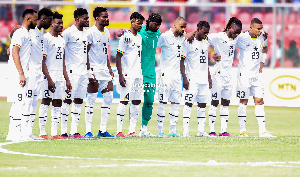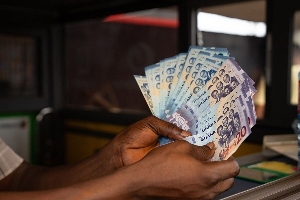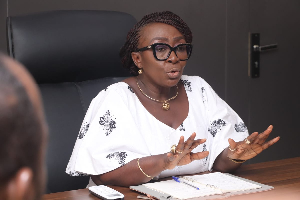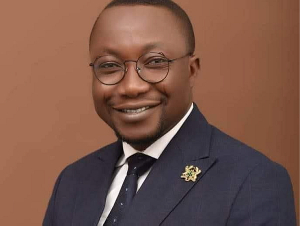East Africa’s economic managers face an uphill battle in 2021 to raise funds that are urgently needed to contain the pandemic and revive their economies as Covid-19 related shocks continue to unfold across the region.
This is partly because excessive borrowing prior to the pandemic pushed countries closer to the debt ceiling with debt-to-GDP ratios now exceeding 50 percent. This leaves little room for external borrowing in 2021.
Additionally, there is concern over the cost of borrowing for countries in the region, which remains relatively high compared with more advanced economies, mainly because of perceived risks and limited debt management transparency.
Yet, analysts anticipate financing needs of countries in the region to more than double due to the prolonged health crisis, which is complicating efforts to fully reopen economies.
The ongoing global economic downturn has also dampened international capital markets. Now, countries will not only be forced to request for debt restructuring, but also be forced to depend on concessional loans and grants from multilateral institutions and banks including the International Monetary Fund, the World Bank, African Development Bank and Afreximbank for emergency financial support.
According to the IMF, which has already disbursed over $16 billion in emergency financial assistance to 34 countries in sub-Saharan Africa including Rwanda, Kenya, Uganda, Tanzania and provided relief on debt service payments to the Fund under the Catastrophe Containment and Relief Trust (CCRT), many countries will continue to have large financing needs.
“For some that will mean seeking a second round of emergency support and, for others, the Fund will work toward resuming existing program discussions. For all member countries, we will remain closely engaged in providing policy and technical advice to support their Covid-related policy responses and broader macroeconomic policy frameworks to navigate the crisis,” the IMF said in an email to The EastAfrican.
Faced with another wave of rising Covid-19 infections across the region, countries not only have to spend more to buy testing kits and personal protection equipment, but also boost spending on support schemes including financial support for ailing businesses.
Also, in spite of the WHO and Gavi-led COVAX vaccine initiative that will mostly help low-income countries access the initial emergency doses of the available Covid-19 vaccines, access is not guaranteed partly because rich countries have pre-purchased most of the available doses. To fast track the process of accessing the vaccine, countries will have to make upfront payments on orders and spend on the required equipment as well its distribution.
Covid-19 related spending including the vaccine purchase and economic stimulus packages are estimated to cost the region in excess of $100 billion. Yet almost all countries in the region have already borrowed and spent more than $100 million on average.
According to open data, as of September 2020, Sudan was the country in East Africa with the highest amount of new healthcare spending announced in response to the coronavirus pandemic at $542 million. In Ethiopia, the country most affected by Covid-19 cases in the region, the announced new spending amounted to $430 million, according to Statista, an online site that tracks health spending data. Kenya is estimated to have spent $337 million, Uganda $81 million, South Sudan $13 million and Tanzania $12 billion.
“Uganda is still interested in additional credit support from the IMF for purposes of mitigating severe financial difficulties experienced during the coronavirus pandemic. Many developing countries have shown support for an increase in the IMF’s Special Drawing Rights (SDRs) because IMF loans carry zero per cent interest and are very convenient for fixing short term financial problems. Although the Trump administration opposed the idea of raising the Fund’s SDR portfolio, we are optimistic that the incoming Biden administration will endorse that proposal and see it through in terms of implementation based on the US’s shareholder dominance of the IMF ownership league,” Albert Musisi told The EastAfrican. He is the Commissioner for Macroeconomic Policy at Uganda’s Ministry of Finance, Planning and Economic Development.
Uganda has already applied for some debt relief from the G20 countries amounting to about $95 million though the deal is yet to be finalised.
For Rwanda, Covid-19 related emergency support from the IMF is estimated at $220.46 million accessed under the Rapid Credit Facility.
Rwanda’s Finance Minister, Uzziel Ndagijimana recently told parliament that the country’s debt outlook has shifted from low to moderate due to lower projected economic performance after GDP dropped by 12 percent in the second quarter to Rwf2.1 billion ($2.13 million), down from Rwf2.3 billion ($2.33 million) in the second quarter of 2019.
For Tanzania, the IMF approved a grant under its Catastrophe Containment and Relief Trust (CCRT) to cover Tanzania’s debt service equivalent of $14.3 million in June 10, 2020.
Covid-related borrowing from the IMF disbursed in June was SDR 10.28 million and SDR 8.29 million on October 2 according to the IMF.
Additional relief covering the period from October 14 to April 13, 2022 will be granted subject to the availability of resources in the CCRT, potentially bringing total relief on debt service to the equivalent of about $25.7 million.
The debt service relief will contribute to alleviate Tanzania’s balance of payment needs stemming from the Covid-19 pandemic. In June, the IMF executive board approved debt relief for Tanzania under the Catastrophe Containment and Relief Trust to provide $14.3 million over the next four months, and potentially up to $25.7 million over the next 23 months.
On May 6, the IMF’s executive board approved the disbursement of $739 million to Kenya to be drawn under the Rapid Credit Facility to support the authorities’ response to the Covid-19 pandemic. According to data from the National Treasury, Kenya had borrowed a total of Ksh1.11 trillion ($11.1 billion) for the nine months period to September 30 (January-September), comprising of Ksh596.6 billion ($5.96 billion) in external debt and Ksh514 billion ($5.14 billion) in domestic debt.
Additional reporting by Bernard Busuulwa and Beatrice Materu
Africa Business News of Wednesday, 6 January 2021
Source: theeastafrican.co.ke













